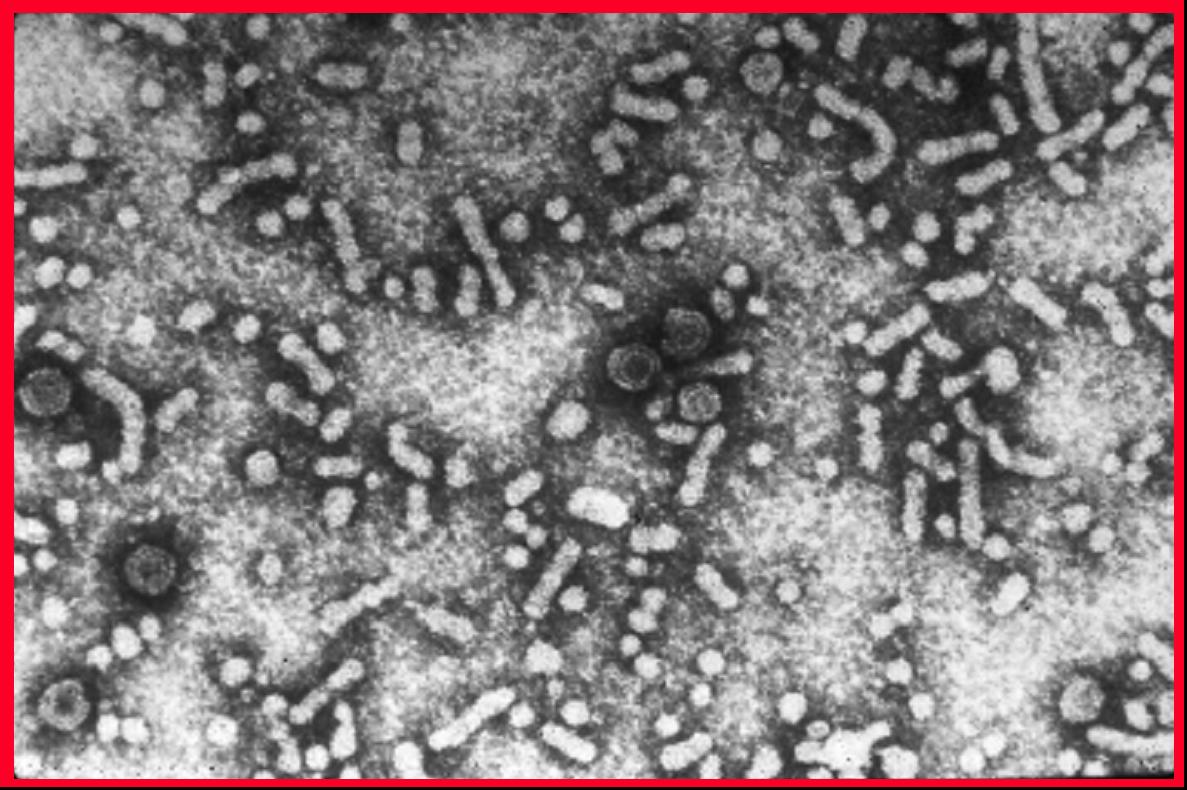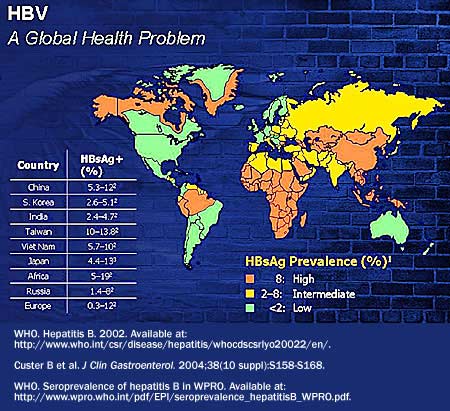
*This web page was produced as an assignment for an undergraduate course at Davidson College.*
Christie's Immunology Home Page
HBV
HBV, which exists in blood and bodily fluids (i.e. breast milk, semen, and vaginal secretions), can be transmitted by unprotected sex, needle exchange for drug injection, and direct exposure to infected blood. The incubation period of HBV averages 120 days. While some individuals may experience no symptoms others may suffer from nausea, vomiting, abdominal pain, and jaundice. Although 90% of infected HBV individuals completely recover and become immune to the virus, others are permanently infected, and some even die. In fact, more than 4,000 people die each year from hepatitis B related liver disease (CDC, 2006). The figure below show a microscopic image of the virus.

Figure 1. Image from http://pathmicro.med.sc.edu/virol/hep-b5.jpg
Worldwide, hepatitis B virus (HBV) infection is a major cause of acute and chronic hepatitis, cirrhosis, and primary hepatocellular carcinoma (Moyer and Mast, 1985). Although prevalence of chronic infection is less than 2% in Northern and Western Europe, North America, Australia, New Zealand, and Southern South America, the prevalence is high (greater than 8%) in all socioeconomic groups in other regions, including Africa, Southeast Asia, the Middle East, the interior of the Amazon River basin, and parts of the Caribbean(CDC, 2006). The figure below shows the geographic distribution of HBV prevalence in 2004.

Figure 2. Image from http://www.pegasys.com/images/hcp/hepatitis-b-virus.jpg
Although there is no known cure for HBV infection, the hepatitis B vaccine has been available since 1982. While vaccines have dramatically reduced the incidence of HBV infection in the United States, many nations continue to struggle with increased incidences of HBV infection because they do not have access to the vaccine (Tan, 2004). For more information regarding the mechanisms of infection, the immune response, and treatment, refer to the following links:
Life Cycle - Innate Immune Response - Humoral Immune Response - Cellular Immune Response
Evasion of the Immune System - Treatment and Future Research
Center for Disease Control. 2006. “Hepatitis, viral, type B.” Yellow Book – CDC Travelers’ Health. Accessed on 4 Feb 2007. http://www2.ncid.cdc.gov/travel/yb/utils/ybGet.asp?section=dis&obj=hbv.htm
Mast, L.A. and Moyer, E.E. 1994. “Hepatitis B: virology, epidemiology, disease, and prevention, and an overview of viral hepatitis.” American Journal of Preventative Medicine 10: 45-55.
Tan, L.J. 2004. “The hepatitis B vaccine.” American Medical Association. Accessed on 11 Feb 2007. http://www.ama-assn.org/ama/pub/category/1809.html
Christie Brough. Biology 307: Immunology. Dr. S. Sarafova. Davidson College. May 4, 2007.